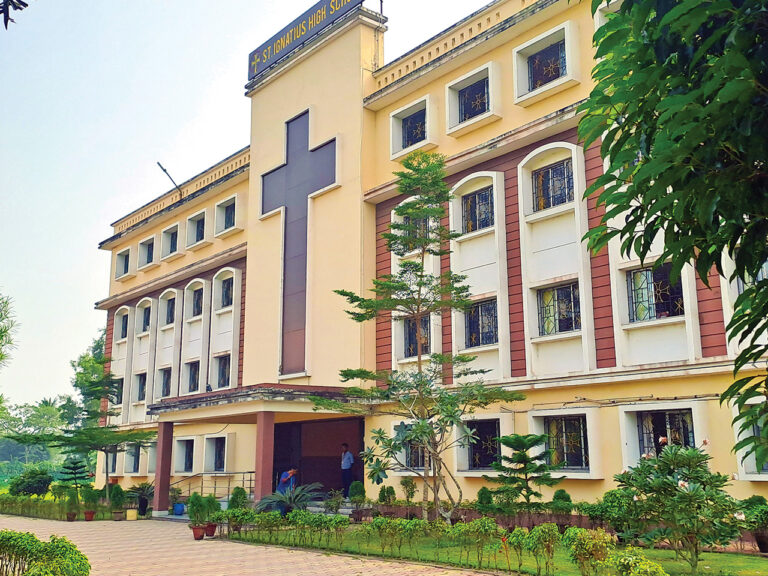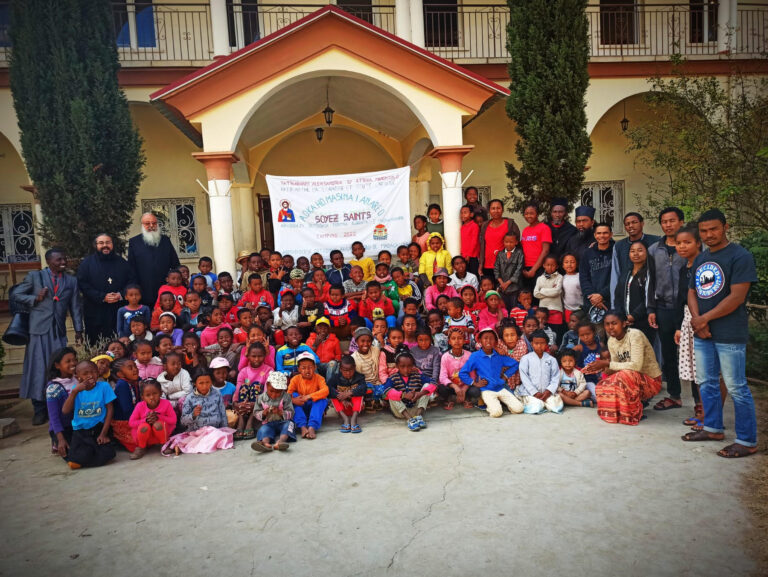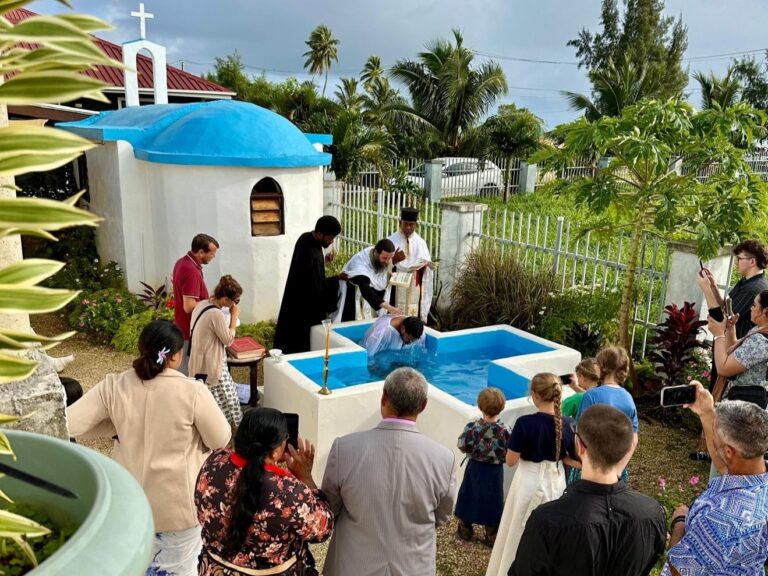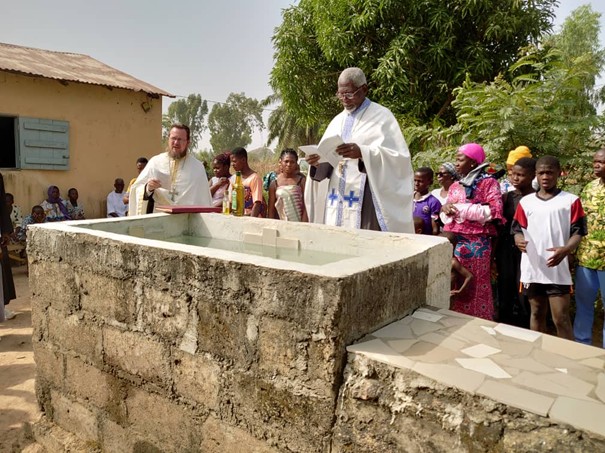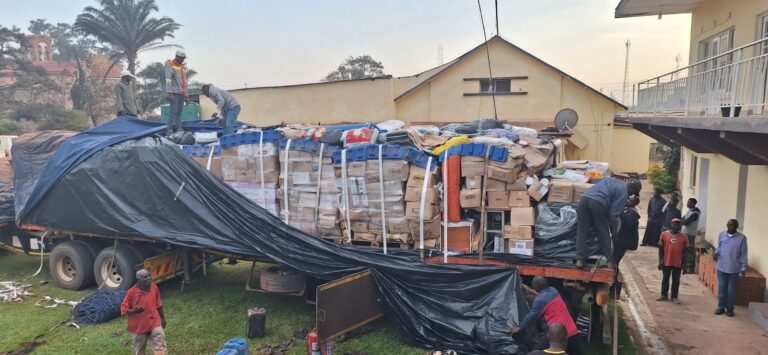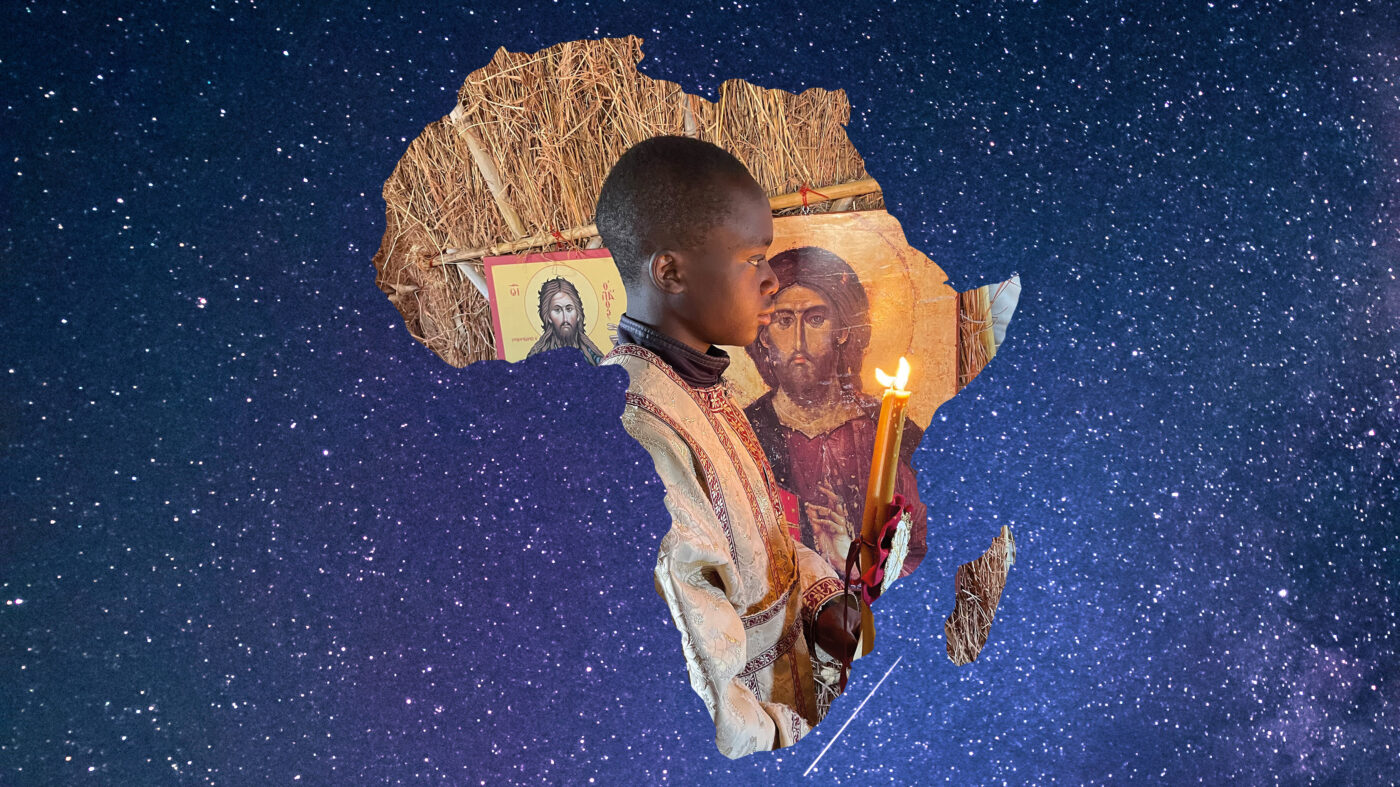An Orthodox Experience in South Korea
By the grace of God, we arrived in Seoul and attended the Great Hours at the Chapel of St. Maximus the Greek on January 3, 2025, and the hierarchical Divine Liturgy at the Holy Church of St. Nicholas on January 5, 2025. The chapel is characterized by its warm ecclesiastical atmosphere reminiscent of a small parish church in the Greek countryside. It is fully adorned with icons, as is the Church of St. Nicholas.
The Holy Church of St. Nicholas is imposing and visible from the main road at a high point among apartment buildings. Its distinctive feature is the blue-green dome which, due to the lack of tiles, has earned it the popular characterization of “bald church” from the Koreans. Above the main entrance of the church stands the uniquely beautiful mosaic of St. Nicholas. Inside the church, for a moment we forgot that we were 8,500 km away from our homeland and mentally returned to Greece. In our humble opinion, as soon as a visitor enters the church, it becomes immediately apparent that this church is an oasis, a home for every soul who wants to pray and secretly meet God.
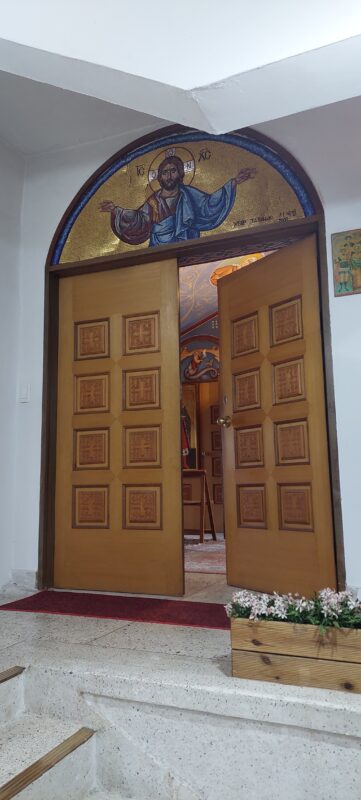
A Vibrant Community of Faithful
It is characteristic that on the day of Epiphany, with Seoul at approximately -10°C, the roads full of snow and ice, and the municipal authorities continuously sending automated messages for the protection of citizens recommending avoidance of movement, the church was full from early on, with faithful of many nationalities (Koreans, Russians, Ukrainians, English-speaking people, Greeks, etc.) actively participating in the Worship.
Immediately after each Divine Liturgy, the Agape meal is offered to the faithful. Just as in early Christian times, in the parish of the Cathedral of St. Nicholas in Seoul (we learned the same happens in all parishes of the Metropolis), the faithful will meet after the Service at the common table to discuss and eat together. Next to the church, there is the “PHILOKALIA” bookstore where the faithful can purchase a variety of Orthodox books in Korean, Russian, and English, as well as icons.
Pilgrimage to the Holy Monastery of the Transfiguration of the Savior
Our most beautiful memory from our trip to Korea is, with certainty, the visit to the first Orthodox monastery in South Korea, the Holy Monastery of the Transfiguration of the Savior in Gapyeong, located in a sparsely populated mountainous area about 1.5 hours from Seoul. A highly blessed “company” of 5 people did us the greatest honor to accept us to accompany them on a pilgrimage excursion on Wednesday, January 5, 2025, under conditions of a sensible temperature of -21°C. We accepted with warm thanks the invitation of Metropolitan Ambrose, and with the Korean Mr. Michael Park as our driver, a descendant of the first Orthodox Christians in Korea who speaks fluent Greek (perhaps better than many Greeks), we set off for the monastery. The monastery is situated in a rugged mountainous location, very close to the site of one of the critical battles of the war between North and South Korea in 1950-1953.
The first thought that came to our mind when we saw the monastery and found ourselves inside it was the well-known verse “Great art Thou, O Lord, and marvelous are Thy works!” Personally, we felt like children who wanted to run up and down with the joy that flooded us. What a blessed place, my God!
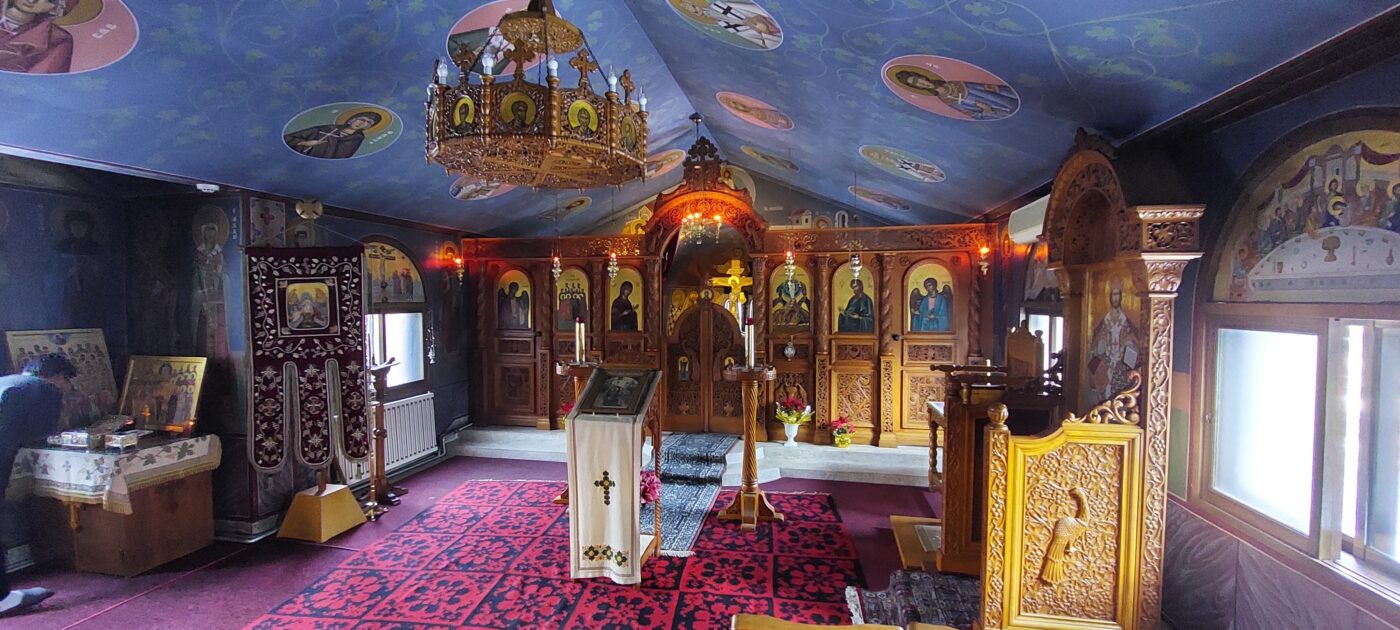
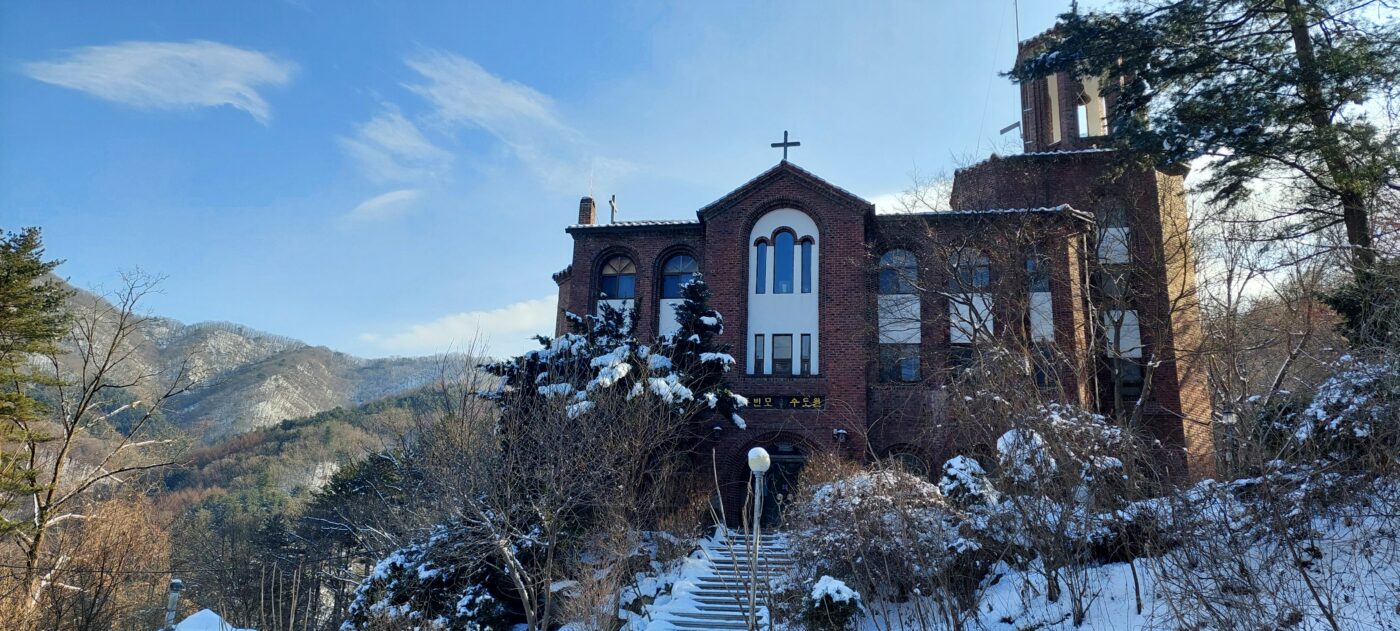
We were welcomed by Sister Agatha who is the first Korean Orthodox nun. Sister Agatha is a very sweet and blessed person characterized by her hospitality and kindness. We thank her warmly because by opening her heart and the monastery to us, she made us feel as if we had left Korea and found ourselves for a while in some mountain village in Greece with her hospitality.
The Legacy of Fr. Sotirios Trambas
After the Divine Liturgy was celebrated, a memorial service followed at the monastery’s cemetery where the late Metropolitan of Pisidia, Fr. Sotirios Trambas, was buried in 2022. We were informed a lot about his actions and work from Father Ambrose, Sister Agatha, Mr. Michael, and Mrs. Athanasia. I will not refer to anything we heard, I will simply say that we are looking forward to the publication of the book about the work and life of Father Sotirios, so that the entire Orthodox community can learn about the work of this great contemporary holy missionary of the Orthodox Church, with his enormous activity inside and outside Korea. Next to Fr. Sotirios’ grave, there is a monument for the Greek fallen in the Korean War where their names are inscribed. We are certain that their souls rejoice in every Divine Liturgy that is celebrated in this blessed monastery.
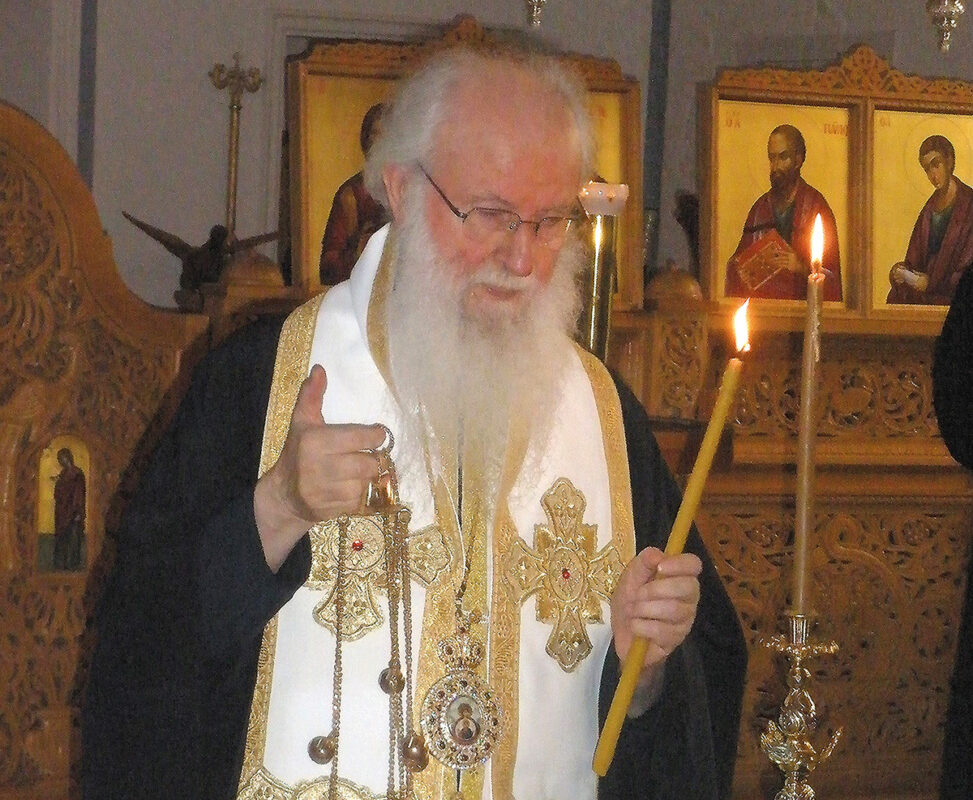
Having now returned to Greece, beyond all the memories, photos, and souvenirs we brought back from our trip to Korea, an indelible, different, special, emotion-filled Orthodox experience remains in our memory. It is now clear to us that Korea has an Orthodox Metropolis and community with very strong foundations and bases, with the signature of a blessed elder, Fr. Sotirios Trambas. However, foundations without continuation would not have as much meaning if there was no continuation. The spiritual children of Fr. Sotirios give a daily struggle and continue to gradually transform Korea more and more into a place that, despite its violent past and the difficulties it has endured, praises and glorifies God. May the Almighty support, enlighten, and strengthen the blessed struggle of all the clergy and people of the Orthodox Metropolis of Korea and Exarchate of Japan.
Nikolaos and Martha Simantiris


